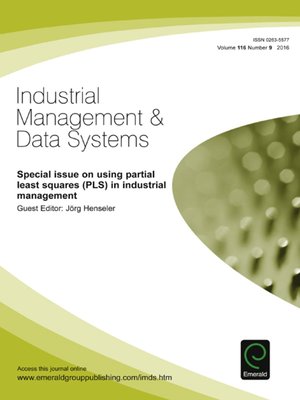Industrial Management & Data Systems, Volume 116, Issue 9
ebook ∣ Special Issue on Using Partial Least Squares (PLS) in Industrial Management · Industrial Management & Data Systems
By Jörg Henseler

Sign up to save your library
With an OverDrive account, you can save your favorite libraries for at-a-glance information about availability. Find out more about OverDrive accounts.
Find this title in Libby, the library reading app by OverDrive.



Search for a digital library with this title
Title found at these libraries:
| Library Name | Distance |
|---|---|
| Loading... |
Partial least squares (PLS) path modeling is a multivariate statistical technique that is frequently used in various disciplines of business research, such as information systems, international business, marketing, operations management, organizational behavior, or strategic management.After lively discussions about whether and, if so, how PLS needs to emancipate from covariance-based SEM and to progress, several substantial changes in the understanding of PLS took place over the last two years, accompanied by new developments.In the light of the changes, the 2nd International Symposium on Partial Least Squares Path Modeling – The Conference for PLS Users took place in June 2015 in Seville, Spain. More than 100 participants exchanged ideas about the new developments around PLS path modeling. The authors of the best conference papers were invited to submit their papers to one of three special issues: The first aims at prediction-oriented modeling in business research by means of PLS path modeling and is published in the Journal of Business Research. The second focuses on European management research using partial least squares structural equation modeling (PLS-SEM) and is published in the European Management Journal. This third special issue, which is published in Industrial Management & Data Systems and combines tutorials about specific extensions of PLS with scientific applications.This special issue has two parts. The first part focuses on guidelines and tutorials on PLS path modeling and contains five papers. The second part contains applications of PLS path modeling which illustrate how PLS path modeling can help generate new insights in industrial management, information systems, and technology management.







